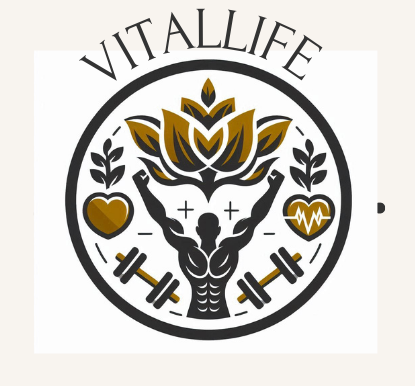Longevity is all about living a longer, healthier life. It’s not just about reaching a ripe old age but enjoying those years with vitality and zest. So, let’s dive into how exercise fits into this whole picture. Spoiler alert: it’s a big deal.
A holistic approach to health means looking at the full picture. This isn’t just diet and exercise, but your mental health, relationships, and even your sense of purpose. Exercise plays a key role here. It’s like the magic sauce that ties everything together.
The connection between exercise and increased lifespan is solid. Loads of studies highlight how regular physical activity can add years to your life. But it’s not just about quantity; exercise improves the quality of those years too. Fewer aches and pains, better mood, more energy. Sounds pretty good, right?
Physical health benefits range from stronger muscles and bones to a more robust immune system. Regular exercise helps ward off chronic diseases like heart disease, diabetes, and even certain cancers. It’s like having extra armor against the typical pitfalls of aging.
Mental health is another area where exercise shines. Physical activity releases endorphins, those feel-good chemicals in your brain. It’s like your body’s natural way of giving you a big high-five. Plus, regular exercise can lower stress levels, improve sleep, and even alleviate symptoms of anxiety and depression.
Cardiovascular Exercises for a Healthy Heart

Cardiovascular health is a major player in the quest for longevity. Keeping that heart pumping strong and steady can make a world of difference in the years you get to enjoy. Cardio exercises are like a powerhouse for maintaining a healthy heart and vascular system.
Popular forms of cardio include running, swimming, and cycling. These activities get your heart rate up and keep it there. Running is classic – you don’t need fancy gear, just a good pair of shoes and some motivation. Swimming is fantastic because it’s easy on the joints, making it a top pick for all ages. Cycling can be done solo or with friends, and it’s an excellent way to explore new places while getting fit.
Low-impact cardio options are great if running or high-intensity exercises aren’t your thing. Walking is incredibly underrated, yet super effective. Taking a brisk walk daily can do wonders for your heart. Dance classes or aerobic workouts add a fun twist to working out while boosting your cardiovascular health.
There are scientific studies backing all this up. Consistent cardio exercise has been linked to an increased lifespan, better heart health, and even a lower risk of developing dementia. Regularly getting your heart rate up strengthens your heart muscle, improves circulation, and helps manage blood pressure. It’s like giving your heart a little tune-up every time you break a sweat.
Strength Training for Muscle Mass and Bone Health
Strength training isn’t just for bodybuilders. Keeping our muscles strong is key, especially as we age. Think of it as a way to maintain your body’s framework.
There are different types of strength training exercises to choose from. Weightlifting is a classic choice. Whether you’re lifting dumbbells, barbells, or even grocery bags, it all counts. Resistance bands are another great option. They’re portable, easy to use, and can target multiple muscle groups. Bodyweight exercises like push-ups, squats, and planks are perfect for those who prefer to skip the gym altogether.
Maintaining muscle mass as we age is super important because it helps with various aspects of health. Strong muscles support joints, making movement easier and helping prevent injuries. Moreover, having more muscle mass can boost your metabolism, which is crucial for maintaining a healthy weight.
Strength training also boosts bone density. This is a big deal, especially for preventing conditions like osteoporosis. When you lift weights or perform resistance exercises, you put stress on your bones, which actually helps them grow stronger.
Another benefit of strength training is better balance. Stronger muscles mean better stability, reducing the risk of falling as you get older. This is particularly important because falls are a common cause of injury among older adults.
To get the most out of strength training, aim for at least two sessions a week. Start with lighter weights or resistance and gradually increase as you get stronger. The goal is to challenge yourself without overdoing it, finding that sweet spot where you feel the burn but stay in control.
Flexibility and Balance Exercises for Reduced Injury Risk
Flexibility often gets overlooked, but it’s a crucial part of fitness, especially as we get older. Keeping our muscles and joints limber helps maintain a fuller range of motion, which makes everyday tasks easier and reduces the risk of injuries.
Forms of flexibility exercises include yoga, Pilates, and simple stretching routines. Yoga is fantastic for both flexibility and mindfulness. It’s a calming way to stretch those muscles while also de-stressing your mind. Pilates focuses on core strength and stability, offering a full-body workout that’s gentle yet effective. Even a few minutes of daily stretching can make a significant difference in how your body feels and moves.
Balance exercises are equally important. They help prevent falls, which can be a serious concern as we age. Simple balance exercises like standing on one leg, heel-to-toe walking, or using a balance board can improve stability. These activities strengthen the muscles that help keep you upright, making you more secure on your feet.
Incorporating flexibility and balance training into daily routines doesn’t have to be complicated. You can mix in some stretches while watching TV or do balance exercises while brushing your teeth. The key is consistency. Little efforts can add up to big changes over time, setting you up for a healthier, more mobile future.
